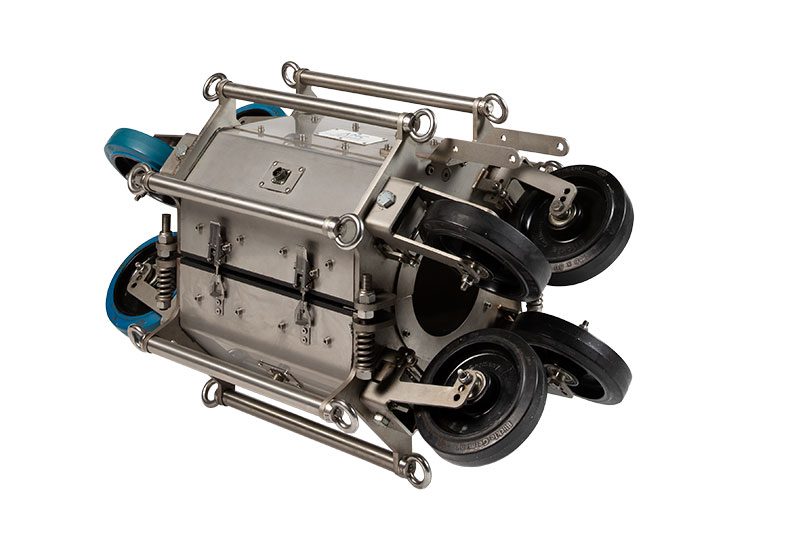Magnetic Rope Tests: High Magnetisation vs. Low Magnetisation

The basis of a Magnetic Rope Test (MRT) is to determine broken wires within a rope. But is this best carried out using high magnetism or low?
The answer isn’t as simple as one being superior to the other. Instead, there are pros and cons for both. To explain why both are viable measurement options, it’s first necessary to understand that both work at different points of the magnetisation curve.
Demystifying the Magnetisation Curve
We first need to know that the basic premise of MRTs is to force a magnetic field through the rope and to measure the flux produced. Any deviation will signal a damaged or broken wire. The key to accuracy is to saturate the rope in its entirety. However, this can only be fully achieved by high magnetism.
Low magnetism is only effective at measuring the external portion of the rope – it’s unable to reach into the core. However, it doesn’t mean that this should be discounted when it comes to MRT devices.
The magnetisation curve has three distinct attributes when subjected to low magnetisation:
- The saturated zone (the exterior)
- An intermediate zone (that is somewhat magnetised)
- An unsaturated zone (the interior that is almost demagnetised)
In order to achieve accurate results, a quality MRT device must operate in the intermediate zone. This allows it to return results from the rope in its entirety, not only the exterior.
Therefore, low magnetisation in isolation will produce the following:
𝐿𝑜𝑤 𝑚𝑎𝑔𝑛𝑒𝑡′ 𝑟𝑒𝑚𝑎𝑛𝑒𝑛𝑡 𝑓𝑙𝑢𝑥 𝑑𝑒𝑛𝑠𝑖𝑡𝑦→𝐿𝑜𝑤 𝑚𝑎𝑔𝑛𝑒𝑡𝑖𝑐 𝑓𝑖𝑒𝑙𝑑 𝑔𝑒𝑛𝑒𝑟𝑎𝑡𝑒𝑑→𝐿𝑜𝑤 𝑖𝑛𝑡𝑒𝑟𝑛𝑎𝑙 𝑑𝑒𝑓𝑒𝑐𝑡 𝑟𝑒𝑠𝑜𝑙𝑢𝑡𝑖𝑜𝑛.
However, to gain true saturation and results, the magnetic induction should be higher than 1.9 T and lower than 2.3 T. In other words, the system must work in the mid-range to return the correct data.
The key takeaway is that the broad options of MRT devices available mean careful selection is necessary to ensure accurate results in any situation. Poor choice will lead to a false security that a rope is without defects. This makes taking advice from a supplier who provides device selection, training and aftersales support essential to gain the necessary test results.
Contact us to find out more about our range of wire rope testing equipment or any of our other inspection products, or request a quote online.
Carry on reading How Robots Are Shaking up NDT Inspections to find out more.
